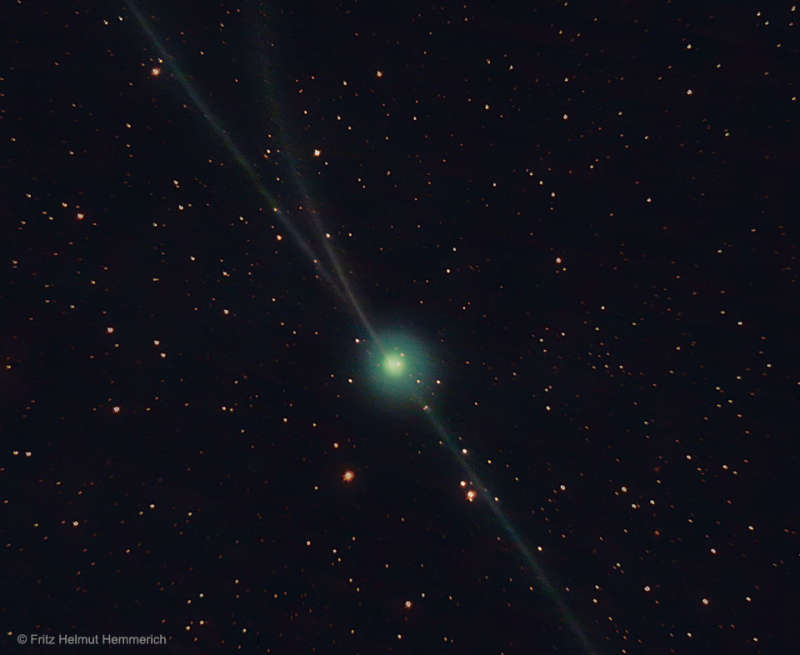Credit & Copyright: Fritz Helmut Hemmerich
Explanation:
How can a comet have three tails?
Normally,
a comet has
two tails: an
ion tail
of charged particles emitted by the comet and pushed out by the wind from the Sun,
and a
dust tail of small debris that orbits behind the comet but is also pushed out,
to some degree, by the solar wind.
Frequently a comet will appear to have only
one tail
because the other tail is not easily visible from the Earth.
In the
featured
unusual image,
Comet 2P/Encke appears to have three
tails because the ion tail split just near to the time when the image was taken.
The complex solar wind is occasionally
turbulent and sometimes creates
unusual
structure in an ion tail.
On rare occasions even
ion-tail disconnection events have been recorded.
An image of the Comet Encke taken two days later gives a perhaps
less perplexing perspective.
1999 2000 2001 2002 2003 2004 2005 2006 2007 2008 2009 2010 2011 2012 2013 2014 2015 2016 2017 2018 2019 2020 2021 2022 2023 2024 2025 |
Yanvar' Fevral' Mart Aprel' Mai Iyun' Iyul' Avgust Sentyabr' Oktyabr' Noyabr' Dekabr' |
NASA Web Site Statements, Warnings, and Disclaimers
NASA Official: Jay Norris. Specific rights apply.
A service of: LHEA at NASA / GSFC
& Michigan Tech. U.
|
Publikacii s klyuchevymi slovami:
comet - kometa Enke - kometnye hvosty - komety
Publikacii so slovami: comet - kometa Enke - kometnye hvosty - komety | |
Sm. takzhe:
Vse publikacii na tu zhe temu >> | |
